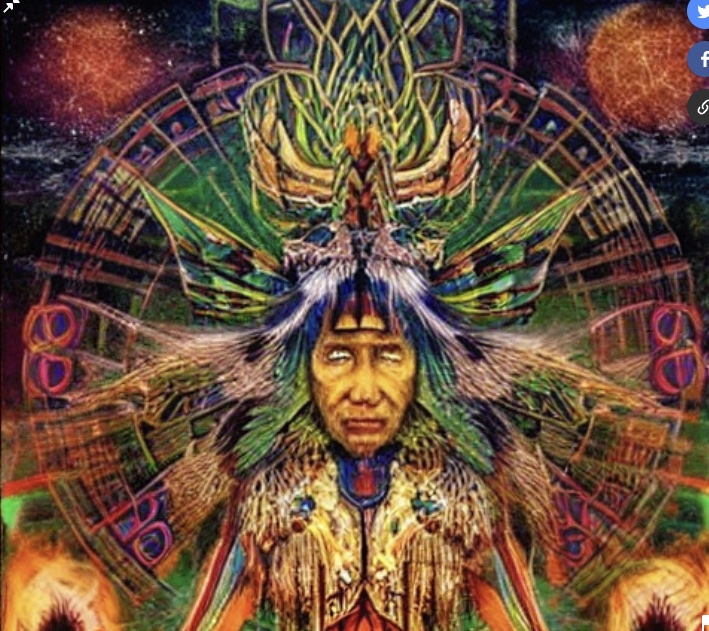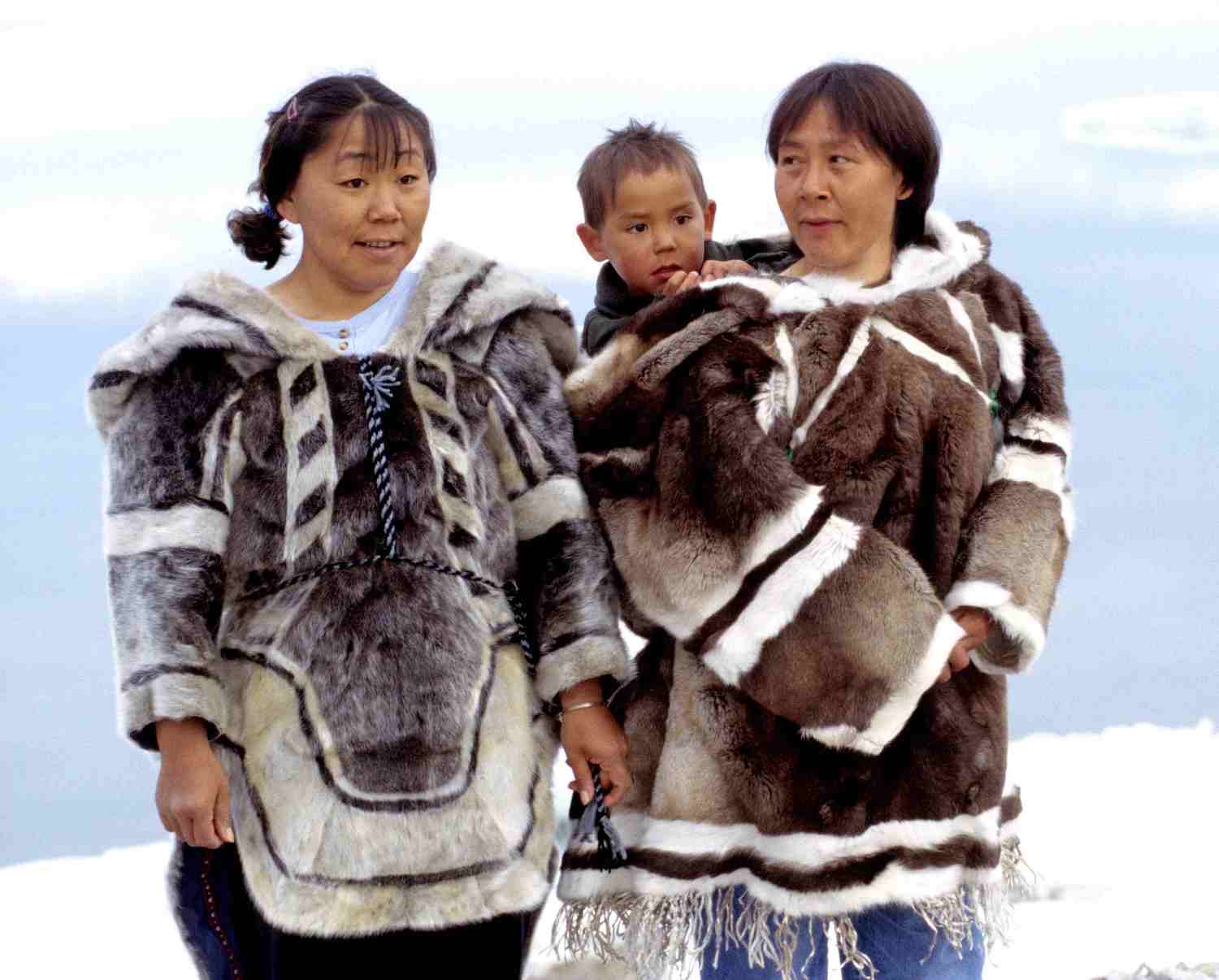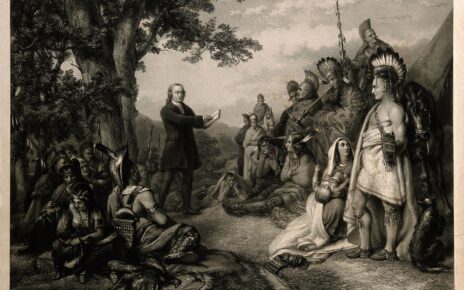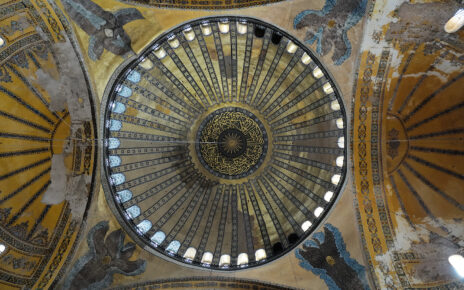The following is the last of a three-part series.The first can be found here, the second here.
Concluding Clarifications
Understandable fears to the contrary notwithstanding, a cult, by definition, is centered around the figure of a single charismatic leader, whereas the whole point of Spirit/Dance is to empower a maximal number of people to autonomously create their own spiritual practice. Here, the abovementioned indistinction between clergy and parishioners assumes crucial importance. More precisely, each mage’s practice is externally limited only by any voluntary associations they choose to create or join with others.
These associations would be based on working with a particular spirit, and each mage would choose a small group of spirits whom they most wish to channel in their work, which I call “primary spirits.” For example, a mage might create a social media group based on the philosopher Zhuangzi, or join an in-person fan fiction group based on the figure of Jean-Luc Picard, or the hero of the Last Airbender. Thus, rather than Spirit/Dance being built around myself as cult leader, if there is anything cult-like about it, one could say that it is like a metalevel “cult-of-many-cults,” which as many “cult leaders” as practitioners.
To flesh out this idea of primary spirits, I will now offer the example of my own current seven, again in no ranked order. First, the Green Lantern comic book superhero, already discussed above, was originally inspired by Nietzsche’s truth-seeking madman with a lantern (in turn inspired by the Cynic Diogenes), and was first drawn by the character’s creator (Martin Nodell) in Dionysian theatrical costume. Second, the legendary rebel leader Robin Hood (or Robin of the Hood, where “Hood” means “forest”) is the leader of a merry band of misfits, an expert in what is now called guerrilla warfare who fights with the poor against wealthy tyranny, possesses the associated epistemological virtue of wiliness, or “foxiness.”
Relatedly, in the animated Disney film, is portrayed an androgynous humanoid fox, which further connects him to the similar populist hero Zorro which is Spanish for “fox.” Third is the abovementioned theatrical character Peter Pan, who (like Green Lantern) has the power of magical flight, and like Robin Hood is the leader of childlike merry outcasts rejecting viciously conformist adulthood. An ally to the racially oppressed Indigenous, Pan also has an affinity for the fey/fairies, and is cast is normally cast in theatrical productions with an androgynous ciswoman. Fourth, Marcus Aurelius is an ancient philosopher and Roman emperor, yet also a humble discipline of the enslaved Stoic philosopher Epictetus, and his legendary virtue (especially patience and self-criticism) led him to advocate a dance-inspired political ethics of self-cultivation and civic virtue.
Fifth, Wang Yangming is an early modern Chinese theorist, poet, military general, and governor, who infused Daoist and Buddhist poetry into Confucian teachings. For defending his peers against an unjust bureaucrat, he was exiled to a poor, backwards province (populated by an oppressed ethnicity) which he transformed into a center of flourishing. Sixth, Abu Nasr Alfarabi is a medieval Turkish theologian and musicologist who advocated a progressive political theory (including proto-feminist, anti-racist, and queer-positive positions) grounded in scientific materialism and imaginative artistry. He also invented the poetic syllogism in logic, promoted music therapy for mental illness in psychology, and famously wore the traditional cloak of the Sufis, which at the time symbolized radical intellectual freedom.
Finally, Gloria Anzaldua is a twenty-first century Chicana scholar, poet, and activist, who reconstructed mythical and religious figures (including Native American deities), in pursuit of a feminist, antiracist, decolonizing, anti-ableist social justice vision, and claimed a magical power (la facultad) inherited from, and perfected with the support of, her Indigenous foremothers.
Note in this example that, in contrast to today’s major world religions, where a top-down structure determines most practitioners’ basic beliefs and practices (most commonly involves a beginning with one or more highest deities, worship of whom is compulsory), Spirit/Dance prefers a bottom-up structure, in that each practitioner begins by asking themselves questions along the following lines: “What figures do I love the most, hold most sacred, most wish to emulate, or most wish could be more widely appreciated and instantiated in our communities today?”
Put differently, Spirit/Dance valorizes or formalizes existing psychological and sociological systems of adoration, obsession, fandom, etc. To repeat, this does not rule out significant overlap among practitioners. On the contrary, it seems likely that a relatively small cluster of primary spirits could organically emerge and rise to prominence.
To elaborate with a few more examples, these primary spirits might include many charismatic figures of the major world religions (such as Jesus, the Buddha, Kongzi, and Thor) as well as the most enduringly popular fictional beings (such as Sinbad, the Golem, and Quetzalcoatl). In this way, most mages would probably choose multiple spirits who would connect them to multiple associations (belonging, say, to both a Naruto association and a Djinn association).
And this could provide not only community for the mages, but also checks and balances against single-minded fanaticism (focusing on just one spirit) and irrelevance (choosing only one spirit that no other mage chooses). For example, there would presumably be many Wonder Woman-spirited mages who were not also Jesus-spirited, thus blunting the potentially overriding or controlling force of the Jesus-spirit on any given mage.
Put historically, most humans (religious or not) seem to have operated on the assumption that there are two possible levels of reality, namely sacred and profane (or religious and secular). As such, the primary question has been whether only the profanely secular level of reality exists, or whether there is also a second, higher lay of reality. Put differently, most have thought that the world is either (a) mostly boring and drab (but with a hidden transcendent layer of magic), or else (b) entirely boring and drab (with which fact we must make our peace, usually by distracting ourselves with drugs, art, scientific exploration, etc.).
By contrast, Spirit/Dance proposes, not that (a) the sacred layer is merely imaginary (which most agnostics/atheists have long asserted), nor that (b) the sacred layer’s imaginariness leads us to misperceive the profane layer as drab and boring (which has also been asserted by agnostics and atheists such as Nietzsche), but rather that (c) the sacred layer is much more similar to, and less distant from, the profane layer. In other words, there are, after all, meaningful referents to traditional religious words and concepts such as “magic,” but those referents are not the traditional ones, nor are they as radically different from those traditional referents as most people have believed.
More concretely, the wondrous feeling a person might experience when deeply immersed in, say, an informal “skit” performed with family members and based on their favorite fictional fantasy universe is in fact a subjectively real feeling—which that person might unreflectively call “magical.” Moreover, in a slightly altered world, the most accurate name for that experience would indeed be “magic,” in part because there is no such thing (in any real world) as the objectively transcendent phenomenon that we have tended to posit, counterfactually, by that name.
However, as long as we do not realize the latter truth (namely that there is no conventional magic), the psychosocial dampening field created by the imagined pejorative contrast (between “literal” and “figurative” magic) will prevent that wondrous experience from reaching its maximal intersubjective existence. But if that intersubjective level of existence for magic were to be reached, then we would finally have the chance to construct practices and institutions that could enable the social construction of magic as a newly objective reality. We might, for two examples, design degrees in magic, or construct new performance spaces and technologies to further enhance such wondrous performances.
Anticipating the objection that of this still seems too abstract and difficult to picture, I now close with a minimal sketch of what a Spirit/Dance event might look like. Although there are no required spaces, neither in term of location nor size, there might be a general preference for the outdoors, and especially meadows and clearings in the woods where available, given the sensibilities of those to whom this practice is likely to be more attractive, as well as the dominance of such motifs in the global religious traditions on which Spirit/Dance draws. For the same reasons, when using indoor spaces instead, it might be helpful to procure as much flora as possible, to at least suggest the wider natural world and cosmos, of which this practice attempts to be ever mindful.
As for the practice of Spirit/Dance itself, the closest analogue in mainstream contemporary Global Northern practice would probably be performance art. A Spirit/Dance performance should be as fully embodied as possible, for both performers and other “beneficiaries” (an alternate term for “audience,” deemphasizing the latter term’s passivity, and emphasizing the performance’s prioritization of its flourishing).
This could mean literally dancing with one’s whole body, or figuratively being bodily immersed to the greatest degree possible in the technological media which one is manipulating (images, sounds, virtual reality, etc.). Spirit/Dance performances should also be significantly spontaneous, improvisational, dynamic, and evolving (as opposed to fully controlled, scripted, predetermined, etc.). Perhaps most importantly in this vein, the performance should be flexible enough to vary in according with, and be profoundly implicated and altered by, each instance of performance, with each constellation of beneficiaries.
Turning from the “what” of Spirit/Dance practice to its “how,” the key phrase here is “therapeutic transfiguration.” That is, for both performers and beneficiaries, the performance itself should be a healing experience (and preferably be experienced immediately as such). This healing, more precisely, should include (1) relief of bodily pain, discomfort, weariness and/or impairment; (2) reduction of stress, anxiety, depression, and/or other mood disturbances; and/or (3) imaginative recontextualization of features of the beneficiaries’ community. The purpose of the latter is to yield alternate perspectives, such that beneficiaries reperceive their lives as less stuck and hopeless, and as more flexible, open, and alive to fulfilling possibilities.
Transitioning from the “how” of Spirit/Dance practice to the “when” of its history, given that it explicitly draws on overlapping traditions of religion, spirituality, mythology, legend, fiction, etc., the spirits inspiring a given mage’s performance will also be part of the heritage of their beneficiaries, and therefore an object of the latter’s psychosocial investment. In other words, a mage should be mindful of the historical context from which their spirits derive, particularly the ways those spirits have been taken up and modified by the most influential interpreters globally (such as when a popular film alters a generation’s understanding of a mythical figure).
That way, mages can start from the interpretive and affective positions which their beneficiaries are likely to occupy at the time of a given performance. Moreover, the most powerful mages will presumably craft their own evolving reinterpretations of the spirits in ways that help their beneficiaries tap into their existing passion for those same spirits and adjust their own comportment in flourishing-enhancing ways, as well as suggesting sustainable trajectories for the beneficiaries to pursue in future.
Finally, there is Spirit/Dance’s “why” dimension. In my critique of Global Northern appropriations of shamanism, my central objection was that the appropriators’ dominant motive tends to be escape into adolescent power fantasies. Or else they seek the kind of status, power, and influence that they wrongly assume Indigenous shaman hold over their tribe members, and crucially without the latter’s undergirding responsibility and accountability. Thus, to the question as to why one should pursue magical power, the unthinking visceral response in the Global North has tended to be: “For its own sake, of course.”
Whereas the actual answer, articulated in virtually every global tradition of Indigenous shamanism, is: “To repair and safeguard the community and its members.” Put differently, magic is as much responsibility as it is power; and that responsibility accrues foremost to the members of one’s flesh and blood community, the living, breathing beneficiaries of one’s Spirit/Dance performances, with whom one shares space and time. With that in mind, I now leave the reader with a blank Spirit/Dance “mage profile,” as a resource to get started with developing their own practice, for the sake of themselves and our shared communities, for whom nothing less than at least indirectly empowering political revolution will do.




